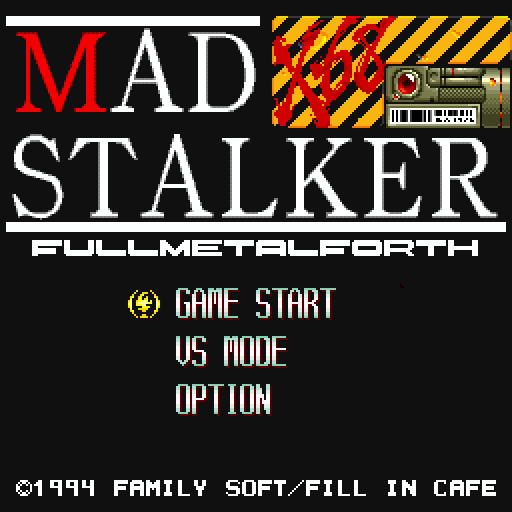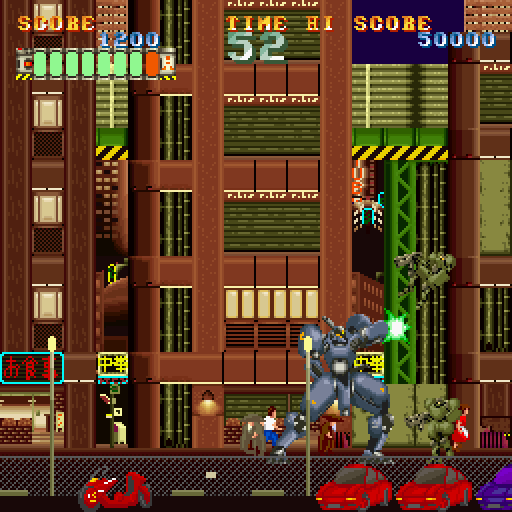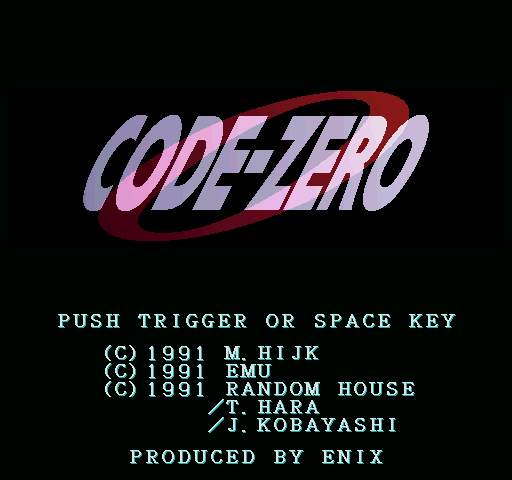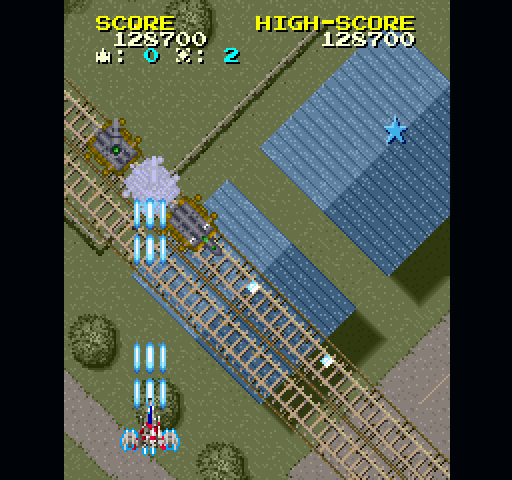LimpingFish's Computo Obscurio Episode 3...and 4!
By LimpingFish 1 Comments
Well, that was longer than a week!
Hello, and welcome to a DOUBLE installment of Computo Obscurio! But first, some bad news: neither of these videos come with a commentary...OF ANY KIND! Instead, relative information will be imparted to you, the viewer, through the medium of this here blog. FORMAT CHANGE! You will now be able read about the history of a game, and view some screenshots, before watching a short video of the game in action. Hopefully, this will allow me to concentrate on getting these blog entries out on time, rather than faffing around with time-coding subtitles.
Enough! You didn't come here to read me prattling on about undisciplined time management! You came for games! Old ones!
First up...

Mad Stalker Full Metal Force (yes, it does say Forth, but trust me on this) is a scrolling beat 'em up, developed by Fill in Cafe and published by Family Soft, for the Sharp X68000 home computer in 1994. If you're familiar with either Family Soft or Fill in Cafe, you've probably played one or more entries in their Asuka 120% series of 2D fighting games that surfaced during the mid to late 1990's on various Japanese formats. Or you're me.
Family Soft began life primarily developing for the MSX home computer. They branched out briefly onto the X68000 and FM Towns platforms, before moving with the times and ending up on Playstation. One of their last, non Asuka 120% related, releases would be a Playstation remake of Mad Stalker, released in 1997 as "Full Metal Force".
History lesson ends!

Mad Stalker is very much in the Kung Fu Master/Vigilante/Dragon Ninja style, with movement and combat limited to a single plane. The player can move left and right, jump by pressing up and duck by, well...pressing down. You have standard light and heavy attacks (punches while standing, kicks while jumping or crouching), while double-tapping in a number of directions will trigger various dash attacks. Which is all very well and good...
Unfortunately, hit-box/collision detection is muddily defined, with instances were attacks seem to pass through smaller enemies, and were damage is taken as a consequence of those same enemies now being close enough to touch you. It makes an already tricky game seem unfairly difficult. Which is a shame, because, when it works, it's a perfectly enjoyable entry in the genre.
Video!
Footnote: Eagle-eyed viewers may have noted a "VS" option on the title screen. This is a one-on-one mode where the player can choose from a roster of six mechs (five bosses and the player mech) and fight it out against the CPU or against a second player.
Episode 3 ends!
Man, this is a long post.
And now...

Enix! We all know that name, right? Dragon Warrior? Of course they're are now part of the behemoth that is Square Enix, but back in 1991 they had been primarily developing titles for the MSX, FM7, PC-98, and Sharp X68000. Dragon Warrior ports on the NES had largely been their only console output, and it would be another year or so before SNES classics like Actraiser and Dragon Quest V would herald their arrival into the era of the 16-bit.
Code-Zero is a vertical shooter for the X68000. Being from a pre-bullet hell era, it may seem sedate by today's standards. Nevertheless, it's a solid old-school, no nonsense shooter that does what it sets out to do.

As far a I can tell, there's no intro sequence, so I can't say for sure if "shoot shit up!" is the extent of the storyline. What I do know, is that the game's subtitle is "The Lonely Space Fighter", which leads to me to believe the hero may have just broken up with his girlfriend.
Regardless, when not shooting shit up, as it were, the hero can power up his ship by collecting the weapon pods occasionally dropped by friendly ships. These pods cycle between a laser, a shield, and an option...option, with each power up becoming maximized by collecting the same type again. Temporary bonus upgrades can also be collected, along with blue stars that provide extra points.
Video!
Episode 4 ends!
Thanks for reading/watching this absurdly long post, hopefully you enjoyed it, and look out for the next Computo Obscurio...soon!

1 Comments